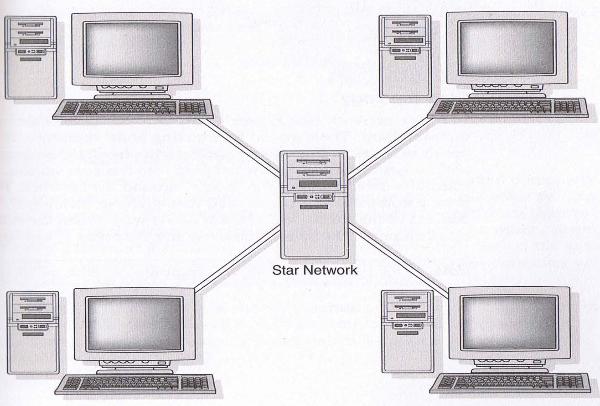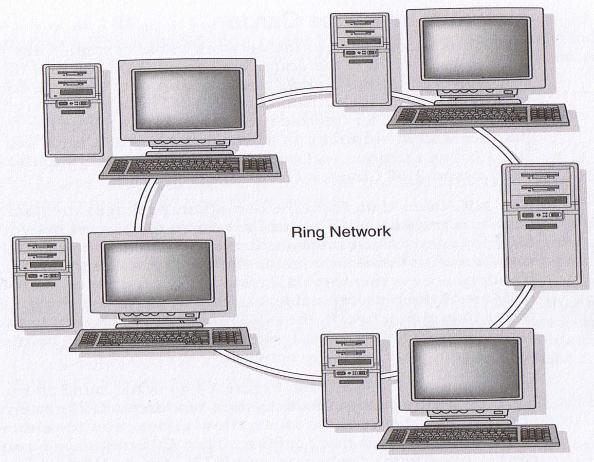

| | | | | | | |||||||
| | | | | | ||||||
| | | | ||||
Topology - the layout scheme that describes the way in which the network computers are wired/connected together.
Some Basic Network Topologies
Bus Network Topology - a network in which all computers are connected to a single linear cable called a trunk (also
known as a backbone or segment). Both ends of the cable must be terminated to stop the signal from bouncing.
Because there is no central point, it is harder to isolate problems in a bus network than in a star network topology. A
break or problem at any point along the bus can cause the entire network to go down. (see Figure 1.1)
Star Network Topology - a type of network configuration in which all computers are connected to a central point.
The central point is called a hub. The hub collects and distributes the flow of data within the network. Signals from the
sending computer goes to the hub and are then transmitted to all computers on the network. In large networks, several
hubs may be connected. This is the easiest form of network topology to troubleshoot because all the information goes
through a hub, making it easier to isolate problems. (see Figure 1.2)
Ring Network Topology - a type of network in which all the servers and clients computers are connected in a closed
loop that resembles a ring shape. There are no terminating ends; therefore, if one computer fails, the entire network will
go down. Each computer in the network acts like a repeater and boost the signal before sending it to the next station.
This type of network transmits data by passing a "token" around the network. If the token is free of data, a computer
waiting to send data can grab it, and attach its data to it and send it on its way. When the token reaches its destination
computer, the data is removed, and the token is sent on it way, and free to circle the network, until another computer
needs to send data again. Only the computer (the one that has the token) can send data in this type of network. This
type of network is also called a "token ring" network. Remember that a server is the computer that runs the network
operating system, manages security, and administers access to resources. The Client however, is the computer that
connects to the network in order to access resources (data) that is provided by the server. (see Figure 1.3)
In the Information Technology industry you may see a network that uses one of the topologies listed and defined
above, but most likely the network will be using a combination of the topologies listed above. For example, you may see
a star-ring or star-bus topology. The reason for this combination of topologies is that you get the benefits of those
topology types.


